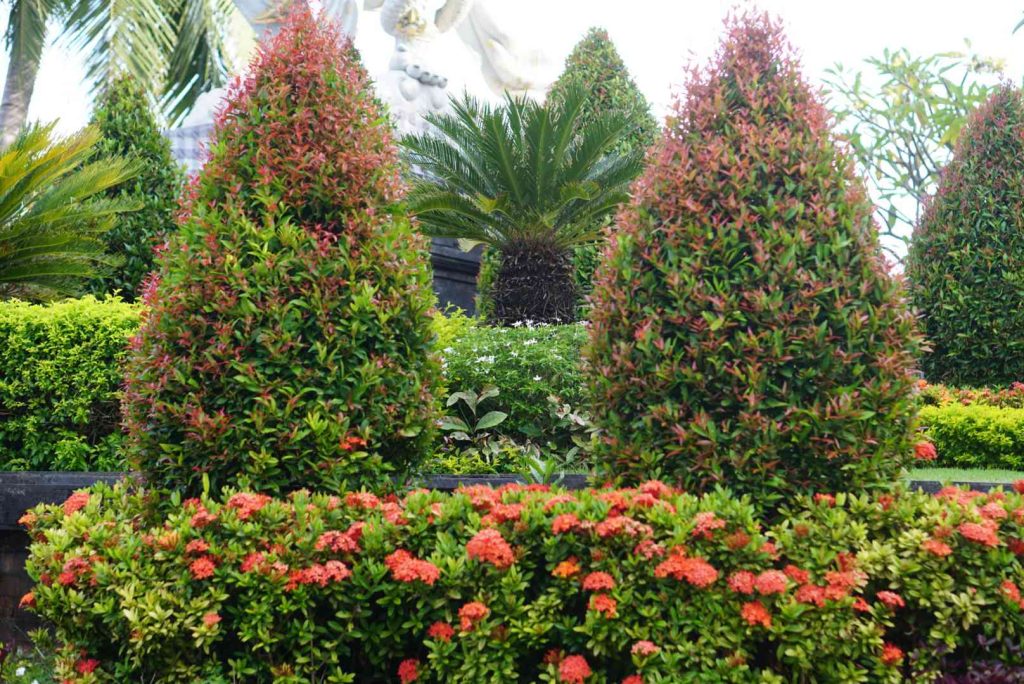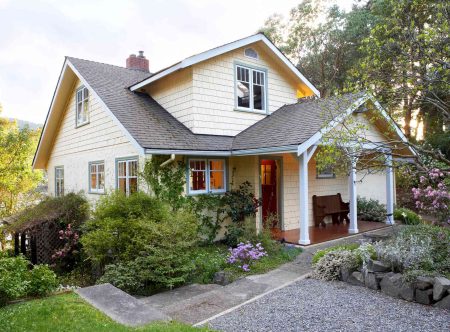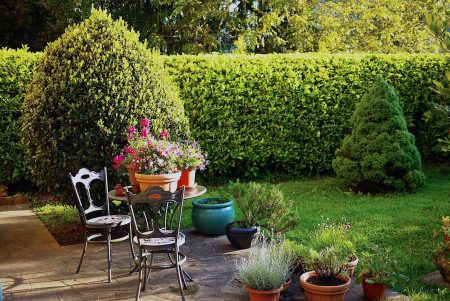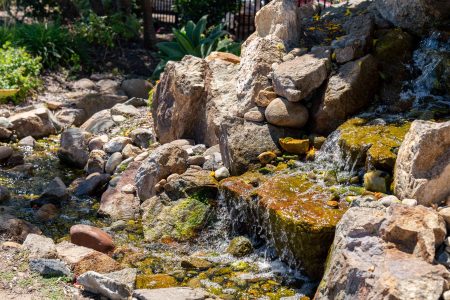Every yard looks better with a mature shade tree in it. Trees add permanence and weight to the landscape. To make the tree look like it belongs there, we often ring the base of the trunk with flowers and plants. Unfortunately, as the tree grows and its branches and roots expand, the area around it becomes a barren wasteland. The tree roots quickly soak up all available water and do a great job of blocking the sun, so few plants thrive there.
Don’t give up and create a volcano of mulch around your trees. It is possible to plant under a tree if you choose wisely and start small. Follow these 10 tips to get plants established and happy growing under your trees..
-
01
of 10Protect the Tree in the Process
It’s hard to believe, but trees can be sensitive to any damage to their roots and bark. Some trees, such as beeches, cherries, plums, dogwoods, magnolias, and maples, have shallow roots barely below the soil surface and respond poorly wihen those roots are disturbed. Be careful digging around the roots when planting under a tree. Use a trowel or digging knife, rather than a large shovel. If you encounter a root, move to another spot.
Also, avoid damaging the bark at the base of the tree. Any injury is an invitation for disease and pests to find their way inside the tree.
-
02
of 10Start Small
Since you cannot dig holes to accommodate large plants under your tree, you will need to plant small seedlings or divisions. You may be able to buy small “liner” plants in bulk from some mail-order nurseries. These are seedlings intended to be grown on at nurseries and sold as plants in garden centers. If you can find a source for liners, you’ll save a lot of money. Of course, you could always start your own.
The main concern is that you want seedlings with small root balls, so you can squeeze them in without digging too wide or deep. This will mean a lot of water at first, but the small plants will adapt more easily to their cramped quarters than a large plant would, and you won’t hurt your tree in the process of planting.
-
03
of 10Use Only a Few Plant Varieties, but Use Lots of Them
Choose a couple of key plants and then plant them in large swaths. This is especially key since you need to plant very small seedlings.
Consider including some fast-spreading groundcovers for a quick cover, but use caution with this. Plants such as pachysandra, ivy, and ribbon grass (Phalaris arundinacea) will take over the entire yard. Plant such as Ginger (Asarum), columbine (Aquilegia), and bleeding heart (Dicentra) are better choices.
-
04
of 10Don’t Ring the Tree; Fill in around it.
For a natural look, avoid circling the tree with a row of plants. Plant all the way up against the tree’s trunk. Let your plants flow around the tree. If you plant sprawling plants, which can be used as ground cover, such as Foamflower (Tiarella) or Laurentia (Isotoma fluviatilis), they will create their own boundaries. Of course, you may have to do a bit of thinning to keep them in check.
Continue to 5 of 10 below. -
05
of 10Rely on Attractive Foliage
Some flowering plants will survive the full shade of the tree but you probably won’t get an abundance of long lasting blooms. To ensure you have a eye catching l display, choose plants with leaves that look good all season. Good choices include: European ginger (Asarum europaeum), Japanese painted ferns (Athyrium niponicum), Hosta, coral bells (Heuchera), Japanese forest grass (Hakonechloa macra), and frilly mayapple (Podophyllum). You can create a beautiful tapestry with just the shapes and colors of leaves.
-
06
of 10Plan for Dry Conditions
It helps if you choose plants that can handle some drought. You will still need to give your plants some TLC for their first year, no matter what you plant. But it will be easier on the plants, and you, if you choose plants that won’t need a lot of supplemental watering during dry spells when the tree’s roots will soak up all available moisture.
-
07
of 10Expand Your Flowering Season
Take advantage of early spring, before the tree leafs out, and include flowering bulbs, especially small ones like crocus, dwarf iris, and Glory in the Snow (Chionodoxa). Another good choice would be spring ephemerals. Plants like bloodroot (Sanguinaria canadensis), Dutchman’s breeches (Dicentra cucullaria), trillium, and Virginia bluebells (Mertensia virginica) tend to disappear, when the temperature warms up, making space for your regular season plants to fill in.
-
08
of 10Include Some Surprises
To give your underplanting some drama and eye-catching appeal, add a splash of unexpected bold color or unusual texture. It will add another dimension of beauty and make your planting look complete. Some bright colored leaves fade out in the shade, so make sure your focal piece gets some sunlight by planting it toward the outer edge of the branches.
Continue to 9 of 10 below. -
09
of 10Find a Carpet that Works and Repeat It
Your yard will be more cohesive if you include the palette of plants you used under your tree in another spot in the garden. Don’t just use it under trees; any shady area will work, maybe by a bench or along a path or in that tiny side yard that doesn’t have enough space or sun for a flower border.
-
10
of 10Keep It Growing
To keep your tree garden healthy, add a couple of inches of organic mulch or compost. You’ll be creating that rich “forest floor” that makes woodlands grow so lushly. The mulch will help retain precious moisture and give the plants a little boost.
Reapply the mulch each year in early spring, before the plants have a chance to leaf out. Just be careful not to bury the plants under it.
To successfully plant under a large tree requires a bit of effort up front. But once your plants have adapted to these conditions, the garden will get better each year.
Read the full article here









